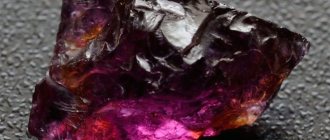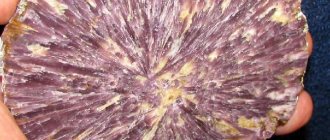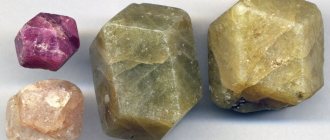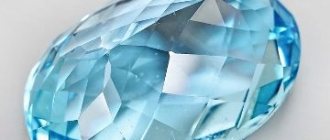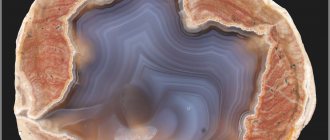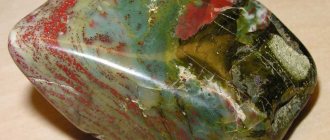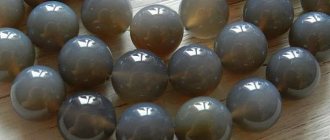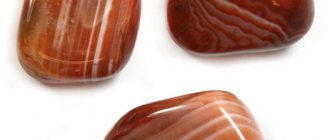Friends, a very interesting mineral diopside has appeared in our collection, or rather its variety chrome diopside.
Here is some information about this stone) And look for products with it on the shelves of our store!!!
Diposid is classified as an ornamental stone. There are different names for this mineral: baicalite, diopide-jadeite, chrome diopside, Siberian emerald, diallag, anthochroite, violan, laurelite. Diopside is pyroxene. The mineral can have violet, blue, light pink, bright green, red-brown, gray, yellowish-green and bluish-green tints. You can find diopsides with the “cat's eye” phenomenon. Stones can also be colorless. All diopsides have a glassy luster. In nature, diopside occurs in the form of crystals. The mineral is common in volcanic eruptions, and some specimens of the stone have been found in pebbles in Sri Lanka. In general, stones are not found larger than 15-20 carats. At the Smithinian Museum in the USA, you can admire black diopside, which was found in India. Its weight is 133 carats. Diopsides and its varieties are mined in Canada (Ontario), Burma, Australia, Italy, USA, Finland, South Africa (Kimberley) and the Russian Federation.
Physical and chemical properties
In percentage terms, the chemical composition of diopside free of impurities looks like this:
- SiO (silicon oxide) – 55.6%.
- CaO (calcium oxide) – 25.9%.
- MgO (magnesium oxide) – 18.5%.
This is rare; most often the composition contains impurities of iron, manganese, chromium, vanadium, titanium, aluminum and other elements in varying proportions.
The mineral is soft and fragile; some varieties exhibit optical properties such as pleochroism, asterism, fluorescence and the cat's eye effect.
| Formula | CaMg(Si2O6) |
| Color | Shades of green, yellow, yellow-green, blue, violet and lilac, black, white, red-brown and others |
| Probable impurities | Iron, chromium, zinc, manganese, vanadium and others |
| Shine | Frosted or glass |
| Hardness | 5,5-6 |
| Transparency | Transparent, translucent, cloudy or opaque |
| Strength | Soft and fragile |
| Kink | Uneven, stepped |
| Cleavage | Clear by (110) |
| Density | 3.25-3.55 g/cm3 |
| Specific gravity | 3,3-3,6 |
| singonia | Monoclinic (planar) |
| Refractive index | 1,663-1,728 |
| Birefringence | 0,024-0,030 |
| Diffusion | 0,017-0,020 |
| Properties | Asterism and cat's eye in the black variety, pleochroism (light green, yellow-green, dark green), fluorescence in white stones. |
Zodiac signs
There are no specific recommendations in astrology for the use of diopside. An amulet with a stone can be worn by all representatives of the zodiac house, and only Capricorns and Aries should use the power of the stone with caution. A characteristic feature of these signs is a penchant for petty scams, and the stone does not tolerate deception. Therefore, diopside can “punish” its owner if he decides to use it to harm others.
A special influence of the stone on Taurus, Pisces and Libra has been noticed. For representatives of these zodiac signs, diopside will become a powerful talisman, the properties of which will positively affect their emotional background, career, material sphere and personal life. Back to contents
5 / 5 ( 6 votes)
Related materials:
Colors and varieties
An interesting fact is that diopside itself in its pure form is colorless, which is extremely rare in nature. The varied color range is determined by impurities present in different quantities in the composition of the mineral.
The color of the stone can be green (various shades from light grass to dark emerald), blue and violet, lilac, red-brown, black with the effect of asterism or cat's eye, yellow and yellow-green, white and pink.
Mineralogists distinguish the following types of diopside:
- Chrome diopside is the most popular type among jewelers. It is distinguished by its rich green color and its shades, which are given to the stone by chrome. It is also called “Siberian emerald”.
Chrome diopside
- “Black Star” is a black mineral that has microscopic needle-shaped impurities, due to which, after cabochon processing, a four-pointed white or silver star appears on the surface (asterism effect).
Black Star
- Violan is a mineral whose color resembles marble due to its structural features. Most of the specimens are white or gray, but the most valued violans are blue, lilac and violet tones, the appearance of which is determined by the different ratios of iron and manganese impurities in the composition.
Violan
- Shefferite is a red-brown variety containing significant amounts of manganese or zinc (zinc shefferite).
Shefferit
- Malacoite is a white or pale green gemstone that in some cases exhibits fluorescent properties.
Malacoite
- Jeffersonite - gems have different shades (from apple green to brown and almost black). The composition contains manganese, iron and zinc.
Jeffersonite
- Salait - samples are distinguished by a high iron content, they are opaque and have a yellow-green color.
Salait
- Lauroite is a gemstone in the shades of young grass and ripe green apple, obtained due to the admixtures of vanadium and chromium.
Lavroite
- Antochroite is a rare variety of delicate pink color, due to the presence of manganese compounds.
Antochroite
- Baikalite is an interesting blue variety mined on Lake Baikal; green specimens are less common.
Baikalit
Areas of use
Diopside is considered a semi-precious and ornamental stone. It is often used among:
- Collectors. Unusual untreated specimens are often used to add to private collections. Options in which one color smoothly flows into another are especially appreciated. Also, collections often contain specimens of interesting shapes or crystals fused with other rocks.
- Designers. Souvenirs, memorable items or small details to complement the interior are made from processed crystals. Due to their softness, stones are easy to process, so among crafts made from natural crystals you can often see products made from malacolith.
- Jewelers The variety of colors, prevalence, softness and strength of the rock - all this makes diopside popular among creators of jewelry made from natural minerals. Jewelry turns out to be elegant and inexpensive, and thanks to its combination with other gems, it will be possible to create unique overflows and combinations.
Mineral deposits
Diopside
Diopside is mined in many countries:
- "Black Star" in India.
- Purple violans, green and emerald chrome diopsides in Russia - in Siberia, the Urals and other regions (Altai, Sverdlovsk, Murmansk regions, Yakutia and Bashkiria, the Republic of Sakha), blue baicalites in the Baikal region.
- Yellow variety in Australia and America.
- Yellow-green specimens in Burma.
- Soft blue and lilac in Italy (province of Piedmont, Trento and Vesuvius), purple stones were discovered in a mine in Saint-Marcel.
- Dark green and red-brown samples are in Canada (Quebec), white - in the province of Ontario.
- Reddish and brown stones in Sri Lanka.
- Green chrome dioxides of various tones in Austria (Tyrol), China (Xinjiang) and on the island of Madagascar (Tulear).
- Large gems of emerald green tones in Pakistan.
- The Czech Republic, South Africa, Afghanistan and Finland can boast of producing several varieties, but their deposits are more modest in terms of production volumes.
Discovery History
According to some reports, diopside was first discovered in the Ala River valley, which is located in the Italian city of the same name.
Gem-quality chrome diopside was discovered relatively recently - in 1968. But it was officially allowed to put it up for sale only in 1988, although the Siberian treasure came onto the market earlier, illegally. Geologist Anatoly Mikhailovich Korchagin described the stone in detail. Since the isolation of chrome diopside as an independent variety, it has been mined mainly in Eastern Siberia, in the Republic of Sakha (Yakutia). The buyer of large quantities of chrome diopside is China. The green stone attracted interest from the very beginning as an affordable alternative to emerald and was even advertised as the Yakut emerald in the 1990s.
In 2013, the largest diopside deposit was discovered in Tanzania. Some well-known jewelry brands in the domestic market such as Sino Jewel and Enzo have been promoting diopside jewelry since 2013.
The magical properties of diopside
Diopside ring
The magic of diopside, as a multifaceted stone, has several directions:
- Green varieties are responsible for protection, harmony in the soul and financial well-being.
- Black - for the development of personality, the discovery of talents, the search for purpose and life path.
- Blue species make a person calmer and more balanced, help to get rid of the burden of past disappointments, survive breakups and betrayals, improve relationships with others and feel like a self-sufficient person.
To cleanse negative energy, unpleasant memories and fears, as well as to activate thinking and restore energy balance, an unset pebble should be placed in the third eye area for 5-10 minutes.
- Yellow - makes a person more ambitious, purposeful and decisive, enhances his ability to work, nourishes him with energy, relieves fatigue and fulfills desires.
- Red, pink and red-brown stones are responsible for relationships in any incarnation - friendship, love, cooperation and so on. They also make the owner more sensual, passionate, enthusiastic and cheerful.
Absolutely all varieties of diopside will make their bearer a versatile person and an interesting conversationalist, will teach you to distinguish lies from truth, and hypocrisy from sincerity, will bring good luck in business, will free you from accumulated negativity, will help you relax and take your mind off problems.
However, diopside is a stone of justice and honesty. He will never help people who are planning any kind of meanness, he can even punish them.
Doctors, teachers and law enforcement officials, as well as those with the names Arthur, Anastasia, Nikolai and Yulia, should choose the stone as a talisman.
Medicinal properties
Brazilian diopside
Diopside is a medicinal mineral. He is capable of:
- Normalize hormonal levels.
- Heal diseases of the respiratory system (stones in a silver frame are most effective - rings and bracelets).
- Provide significant assistance in the treatment of diseases of the cardiovascular system (beads from green varieties).
- Help the body recover after surgery and severe physical injuries (more effective in combination with boji stones).
- Restore acid-base balance in the body.
- Regulate the functioning of the gastrointestinal tract (gems in a gold frame are suitable).
- Eliminate nervous system disorders (bracelets), normalize sleep (pebble under the pillow).
When treating serious diseases, you should not rely only on the healing power of the stone; its main purpose is to increase the body's resistance, enhance the effect of medications and speed up recovery.
Products and decorations made of diopside
Set of jewelry with diopside
Diopside and products made from it cannot be called too expensive or cheap. The cost of a stone varies and depends on its type, processing method, place of extraction, rarity and quality.
Individual copies can be purchased at different prices, for example:
- “Black Star” in the form of a cabochon with an asterism effect – $7-10 per carat.
- Yellow stone with cat's eye effect - 5-6 dollars per carat.
- Chrome diopside, rich green color, step-cut - $10-25 per carat.
- A flat gray-blue violan weighing about 3 grams - for $7.
Diopside ring
The cost of jewelry with diopside also includes the price of the frame and the complexity of the product design:
- A silver ring with a black stone will cost $40-90 (depending on the size of the insert), and a designer maxi ring made of silver with three black cabochons will cost $188.
- Silver earrings with a “black star” cost $110-160, and designer earrings made of silver and gold in the shape of cats with chrome diapse cost $462.
- Chrome diopside chips strung on a thread (40 cm) - $11.
- Men's bracelet made of dark diopside with a cat's eye effect with a silver clasp - $52.
- A silver ring with a blue violin costs $30, and a set with earrings costs $63.
- Gold stud earrings with small chrome diopsides – $155.
How to distinguish an original from a fake
Diopsides are practically not counterfeited, since it is not economically profitable. Previously, they themselves were used as imitation emeralds. Today this practice is not common. However, on the market you can find synthetic analogues of stone that are not inferior to natural specimens in beauty, quality and cost. Examining the gem under a magnifying glass will help you identify them.
Synthetics will be ideal in all respects - in shape, structure, and color. There will always be some defects in natural stone.
Buying artificial diopside is unprofitable only when the buyer expects to receive magical support or treatment with the stone. Those who value aesthetics will only benefit by purchasing a synthetic gem.
Discovery History
According to some reports, diopside was first discovered in the Ala River valley, which is located in the Italian city of the same name.
Gem-quality chrome diopside was discovered relatively recently - in 1968. But it was officially allowed to put it up for sale only in 1988, although the Siberian treasure came onto the market earlier, illegally. Geologist Anatoly Mikhailovich Korchagin described the stone in detail. Since the isolation of chrome diopside as an independent variety, it has been mined mainly in Eastern Siberia, in the Republic of Sakha (Yakutia). The buyer of large quantities of chrome diopside is China. The green stone attracted interest from the very beginning as an affordable alternative to emerald and was even advertised as the Yakut emerald in the 1990s.
In 2013, the largest diopside deposit was discovered in Tanzania. Some well-known jewelry brands in the domestic market such as Sino Jewel and Enzo have been promoting diopside jewelry since 2013.
How to care for stone
The main rule for caring for diopside is to be careful when wearing and storing it, since the mineral is quite soft and fragile. The stone should be stored in a personal case or compartment of the box, protected from other gems with a soft cloth. Cleaning is done as soon as it gets dirty, but preferably not too often. The stone is washed with running water; if necessary, a weak soap solution is used. Cleaning agents and brushes must not be used. Dry the jewelry only with a soft cloth.
